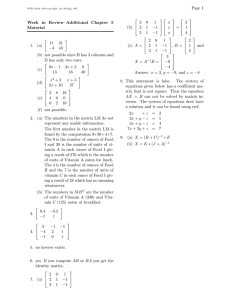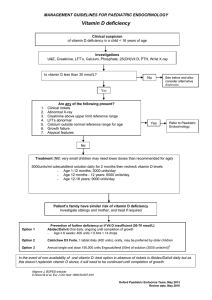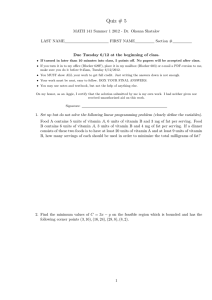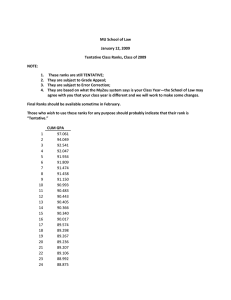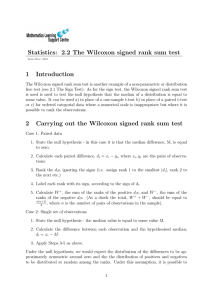Worked example of Wilcoxon rank sum test Data from a study of effects of Vitamin D on epileptic patients. Patients were randomly assigned to
advertisement
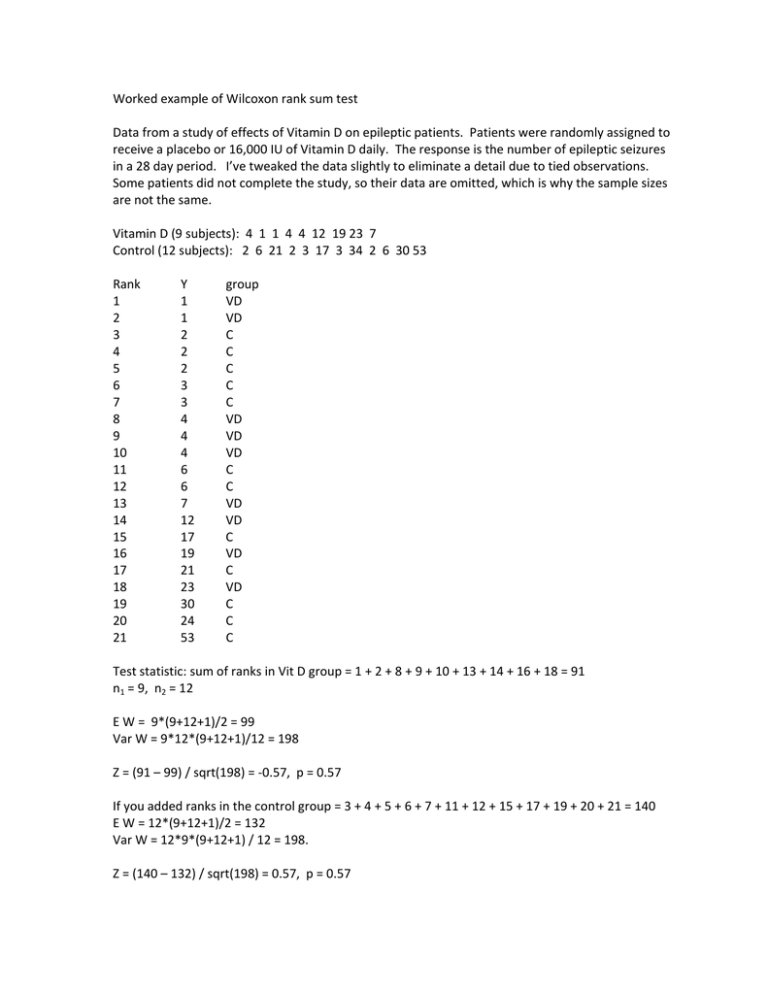
Worked example of Wilcoxon rank sum test Data from a study of effects of Vitamin D on epileptic patients. Patients were randomly assigned to receive a placebo or 16,000 IU of Vitamin D daily. The response is the number of epileptic seizures in a 28 day period. I’ve tweaked the data slightly to eliminate a detail due to tied observations. Some patients did not complete the study, so their data are omitted, which is why the sample sizes are not the same. Vitamin D (9 subjects): 4 1 1 4 4 12 19 23 7 Control (12 subjects): 2 6 21 2 3 17 3 34 2 6 30 53 Rank Y group 1 1 VD 2 1 VD 3 2 C 4 2 C 5 2 C 6 3 C 7 3 C 8 4 VD 9 4 VD 10 4 VD 11 6 C 12 6 C 13 7 VD 14 12 VD 15 17 C 16 19 VD 17 21 C 18 23 VD 19 30 C 20 24 C 21 53 C Test statistic: sum of ranks in Vit D group = 1 + 2 + 8 + 9 + 10 + 13 + 14 + 16 + 18 = 91 n1 = 9, n2 = 12 E W = 9*(9+12+1)/2 = 99 Var W = 9*12*(9+12+1)/12 = 198 Z = (91 – 99) / sqrt(198) = ‐0.57, p = 0.57 If you added ranks in the control group = 3 + 4 + 5 + 6 + 7 + 11 + 12 + 15 + 17 + 19 + 20 + 21 = 140 E W = 12*(9+12+1)/2 = 132 Var W = 12*9*(9+12+1) / 12 = 198. Z = (140 – 132) / sqrt(198) = 0.57, p = 0.57


